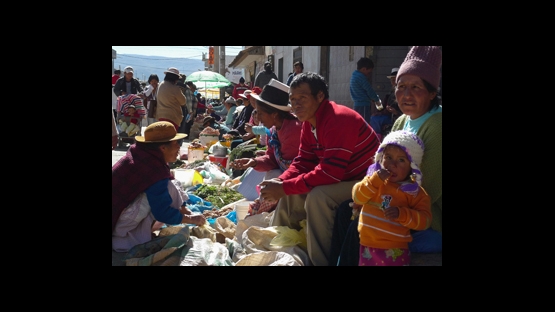The solution to hunger is more food. That statement seems pretty obvious, right? But science shows us that "more food" is only half the answer.
In reality the solution to hunger is more of the right kind of food; food that provides not just carbohydrates and energy-rich calories, but pro-Vitamin A, iron and zinc. These are known as micronutrients.
And if children aren't consuming enough micronutrients, they can become mentally impaired, vulnerable to infectious diseases, or even die. According to the World Health Organisation, about 250 million preschool children are Vitamin A deficient. An estimated 250?000 to 500?000 Vitamin A deficient children become blind every year, half of them dying within 12 months of losing their sight. In developing countries every second pregnant woman and about 40% of preschool children are estimated to be anaemic.
Micronutrient deficiency is often called "hidden hunger".
Because of its potentially devastating impact on individuals, families and entire countries, the IAEA is working with Member State governments and private partners to uncover and combat hidden hunger.
The IAEA, through its Nutritional and Health-Related Environmental Studies Section, supports the use of stable isotope techniques. These are nuclear (non-radioactive) testing methods that tell scientists whether people are receiving the right amount of micronutrients from the foods they eat. Nuclear methods supported by the IAEA include not only the evaluation of body Vitamin A reserves, but also the extent that micronutrients in human foods and diets are absorbed and utilized by the body.
This provides Member States with the necessary evidence to design or improve their national health and nutrition programmes.
The IAEA also helps scientists evaluate the nutritional value of biofortified crops. Biofortification is an agricultural approach that uses improved nutrition as a criterion for the development of new crop varieties. Once developed, such crops have higher content of micronutrients such as pro-Vitamin A, iron or zinc. And each new crop from these seeds will have the same micronutrient content.
In addition, the IAEA is assisting Member States design effective, sustainable nutrition interventions based on locally available foods that help prevent micronutrient deficiencies in infants and young children.
"If we want healthy, productive populations over the next century, then I believe that we need to invest in sustainable approaches like biofortification and food diversification that have great potential to not only feed people, but feed them well," says Najat Mokhtar, Head of the IAEA Nutritional and Health-Related Environmental Studies Section.


